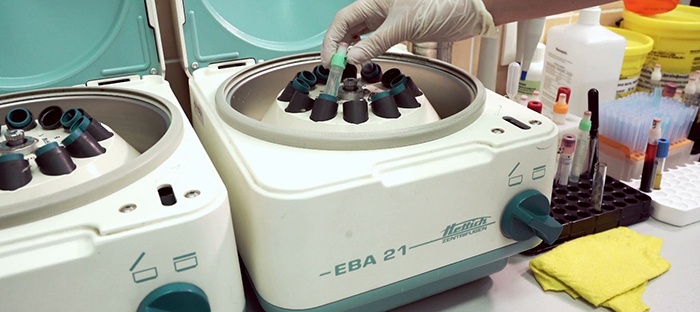
Centrifuge technology is critical in the clinical laboratory. Centrifuges are used to separate fluids, gases or liquids, based on density. Clinical benchtop centrifuges are used for applications like quick production of platelet poor plasma (PPP) and the separation of serum, urea, or blood samples in hospital and research laboratories.
Times have changed since centrifuge systems were first introduced in the mid-15th century to separate milk and the mid 1800’s when they were first used in a laboratory setting. So, what trends are most important in centrifuge use today?
It can really be broken down into three areas: Safety, Efficiency, and Refrigeration.
Safety
The biggest trend in centrifuge use is the focus on enhanced safety. Typically, centrifuge incidents involve user error rather than a problem with the actual centrifuge itself. Rotor incidents usually involve errors in connecting and tightening down centrifuge rotors on drive shafts, or creating an imbalance condition by improperly balancing rotors or using them past their lifetime. Users may also experience tube failure due to over-speed or overuse.
Many of today’s centrifuges offer features to help prevent these types of incidents from occurring. With rotor recognition the centrifuge knows which rotor is installed, checks the maximum speed, and doesn’t allow programs to run if the speed is exceeded. Rotor imbalance sensors and system shut-down software quickly detect improper rotor balancing and shut down the system before an incident can happen. Vibrations created by the spinning rotor are being reduced by shock absorbing features that keep the centrifuge steady on the benchtop.
Not all safety features are directed at the centrifuge. The use of aerosol containment canisters and lids protects the user from exposure to dangerous samples. This improves the workplace environment for all who are in the laboratory.
Efficiency and User Friendliness
Lab Directors appreciate a centrifuge that is efficient and easy to use. Centrifuges with simple control panels and programmable settings help streamline processes and improve workflows. In addition, centrifuges with quiet operation keep noise levels down within the laboratory, therefore minimizing distractions.
MedicalLab Management recently published their Trends in Centrifuge Usage survey results. Among the results, the User Satisfaction question was overwhelming positive with 36% ranking satisfaction as Excellent and 53% as Good. Among their comments both efficiency and user friendliness ranked high. The complete article can be downloaded here.
Refrigeration
There are more applications today that require centrifugation at refrigerated temperatures. Most of the work is done at 4°C. As a centrifuge spins at a faster speed, more heat is generated within the bowl. Even though your room may be cold enough for the sample, within the bowl itself, the temperature will be much warmer. Many laboratorians are seeing the benefits of spending the extra money for a refrigerated centrifuge to ensure that proper temperatures are maintained when spinning samples that require cooler temperatures.
Helmer Scientific offers a full line of clinical centrifuge packages from Hettich. Known for their reliable functionality, ease of use, and high safety standards, Hettich centrifuges have been delivering the equipment scientists need in the modern laboratory for over 110 years. A manufacturers rebate is offered on select centrifuges and centrifuge packages. Learn more below.




